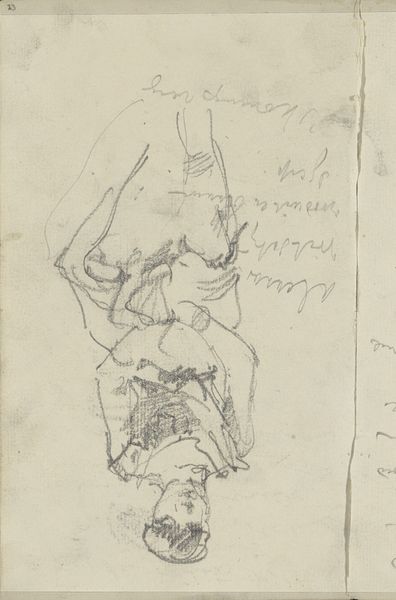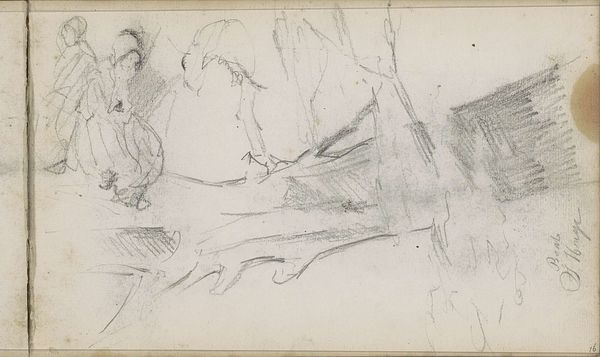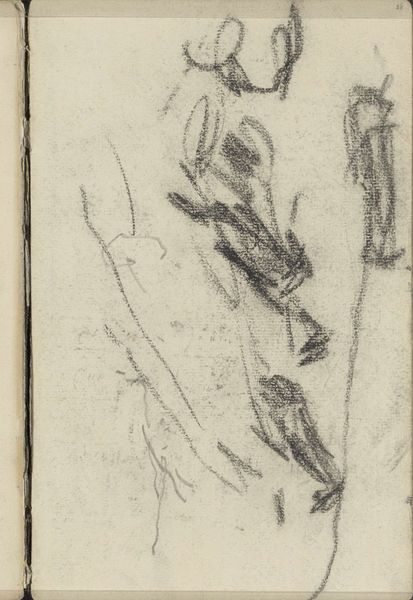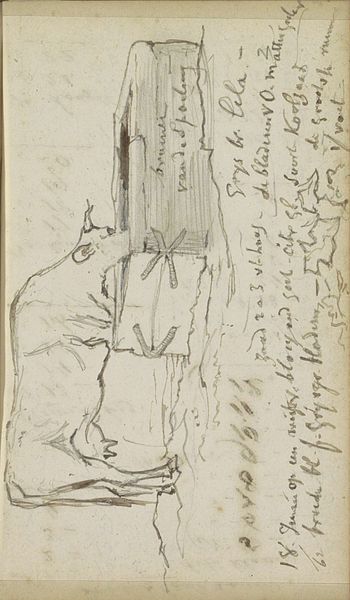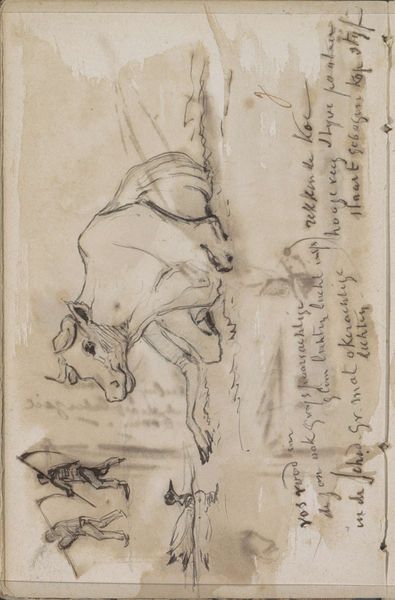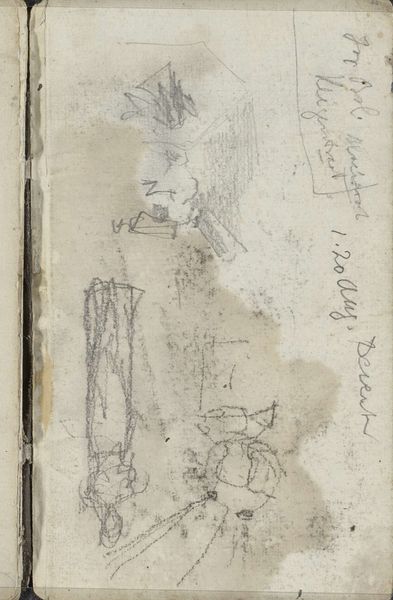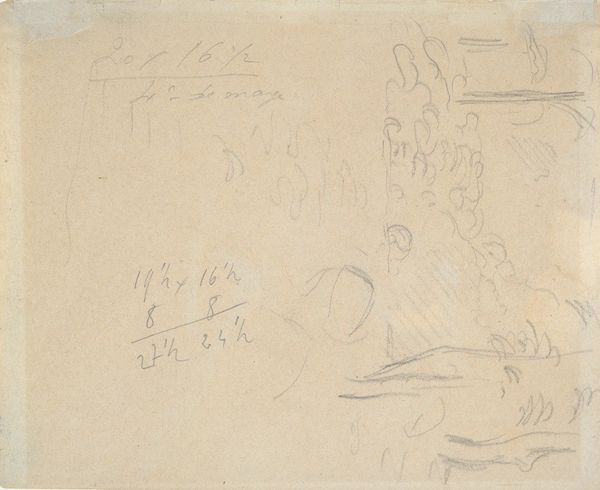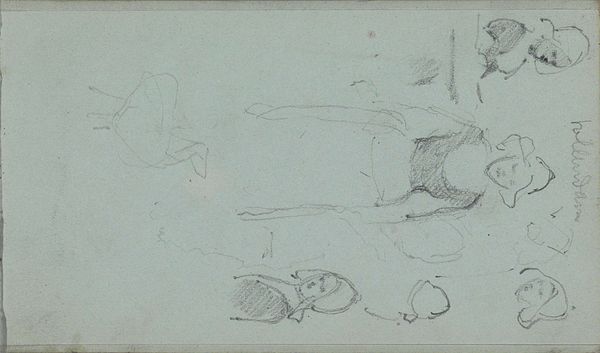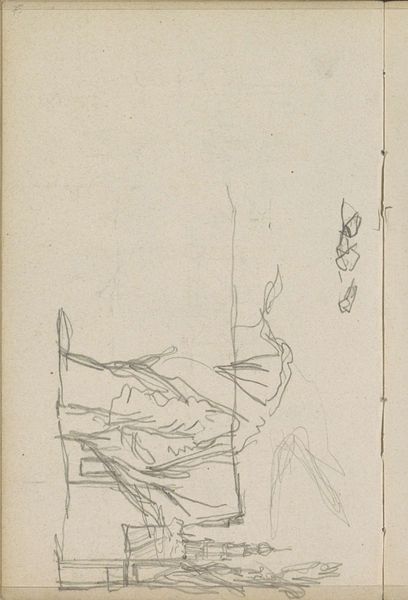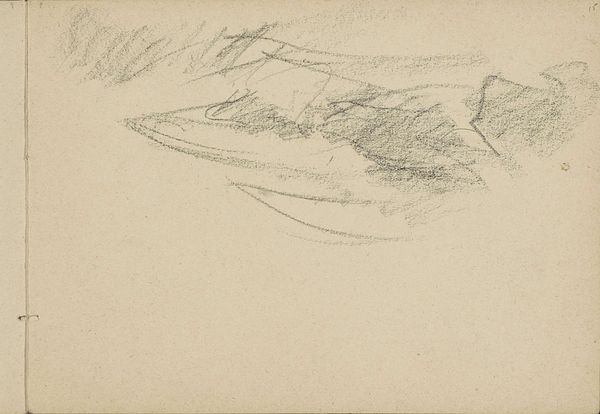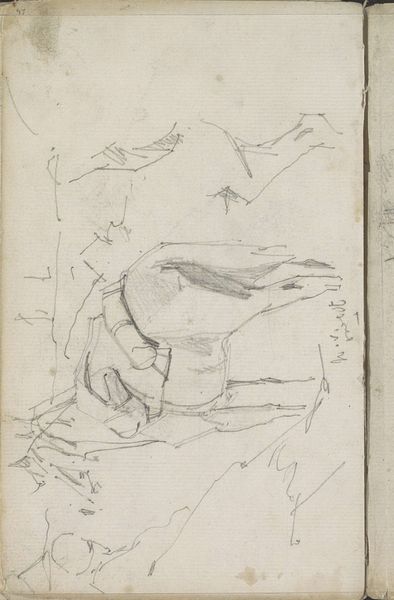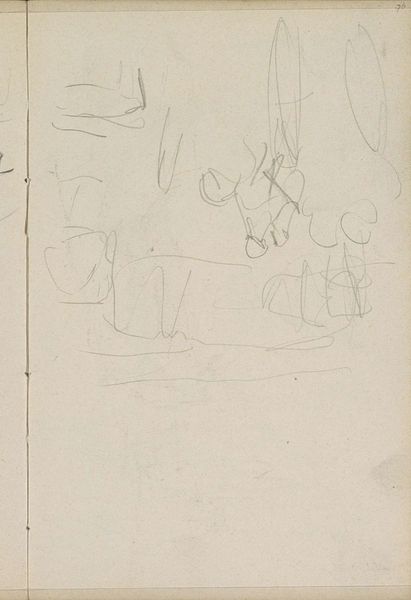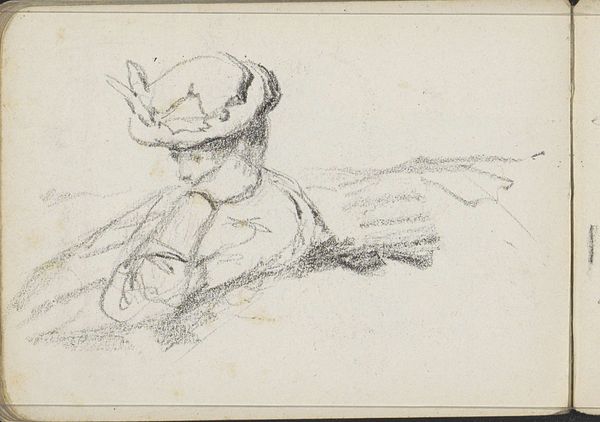
drawing, pencil
#
portrait
#
drawing
#
impressionism
#
pencil
#
realism
Copyright: Rijks Museum: Open Domain
Curator: This is “Figuurstudies,” or “Figure Studies,” by Jozef Israëls, created around 1885. It's currently held in the Rijksmuseum's collection, rendered in pencil as a drawing. Editor: It's intriguing. Raw, almost…visceral. The pencil strokes feel quick, urgent, as if capturing fleeting moments. I am also interested in the notes scribbled around the drawing. Curator: Israëls was deeply engaged with portraying the lives of the working class, particularly the struggles of peasant communities. Consider how his Jewish identity shaped his perspective. He saw parallels between the historical persecution of Jewish people and the contemporary injustices faced by marginalized groups, like Dutch farmers in poverty. Editor: That resonates when I consider the subject's apparent exhaustion, even a kind of collapse, especially in the figure lying down. Pencil as a medium emphasizes the work required to complete this drawing, a sketch of life at the edges. Curator: Absolutely. There's also something poignant in how he presents these figures. He doesn't romanticize poverty; he humanizes it, forcing us to confront the realities of hardship. How might feminist readings of his work, acknowledging its focus on both men and women in destitution, allow to address exploitation, in all gender presentations. Editor: The materiality of pencil—a humble tool, widely accessible—becomes significant in conveying the subject's social standing. Consider how the quick, almost unfinished lines mirror the precariousness of their lives, suggesting transient experience and labor. The hand holding the pencil traces the material realities Israëls attempts to capture. Curator: Exactly. And by leaving the sketch unfinished, he also challenges the viewer to confront their own role in perpetuating or alleviating suffering. It pushes for ethical engagement. Editor: The sketch holds space for viewers to see how production functions, with attention for how labor, precarity, and human struggles materialize at a given time and a given place. Curator: Ultimately, Israëls used his art as a platform for social justice. “Figuurstudies” encapsulates that intention, challenging viewers even today to confront their role. Editor: Seeing the artist’s labor alongside representations of hard labor lets me walk away pondering how artists’ lives intersect and differ. Thank you.
Comments
No comments
Be the first to comment and join the conversation on the ultimate creative platform.
